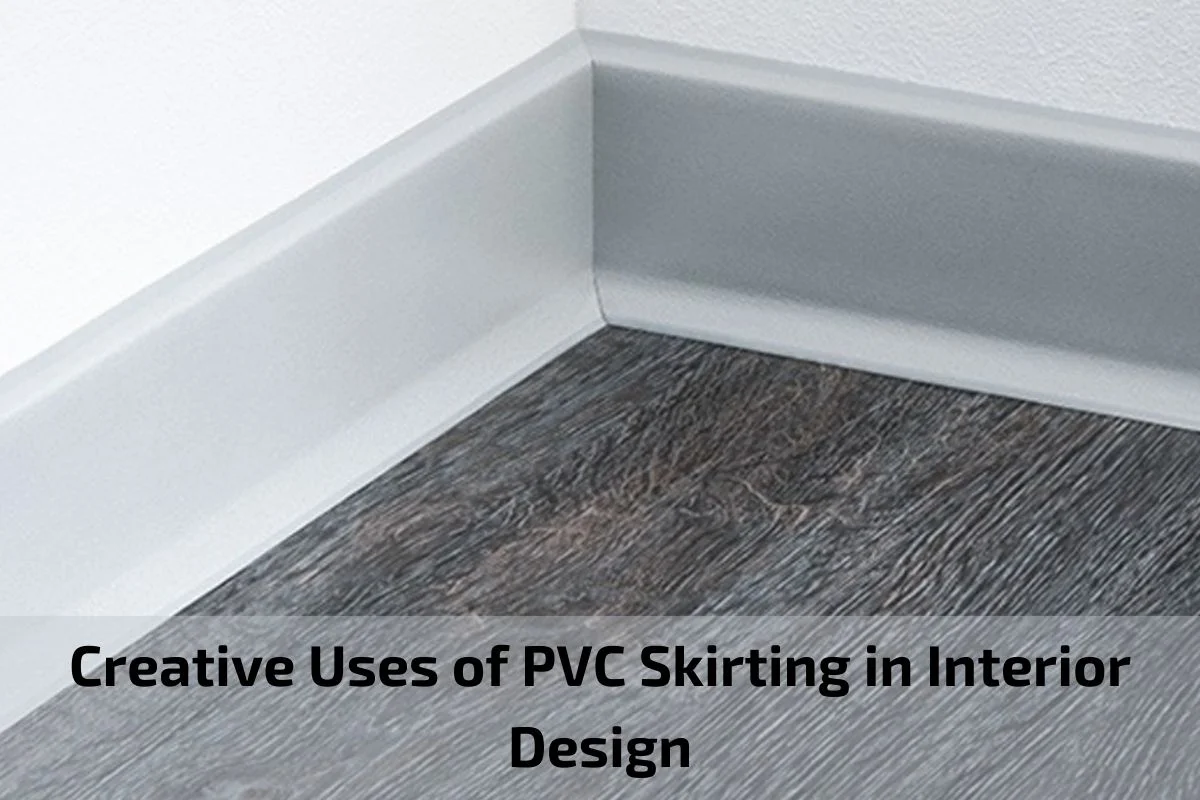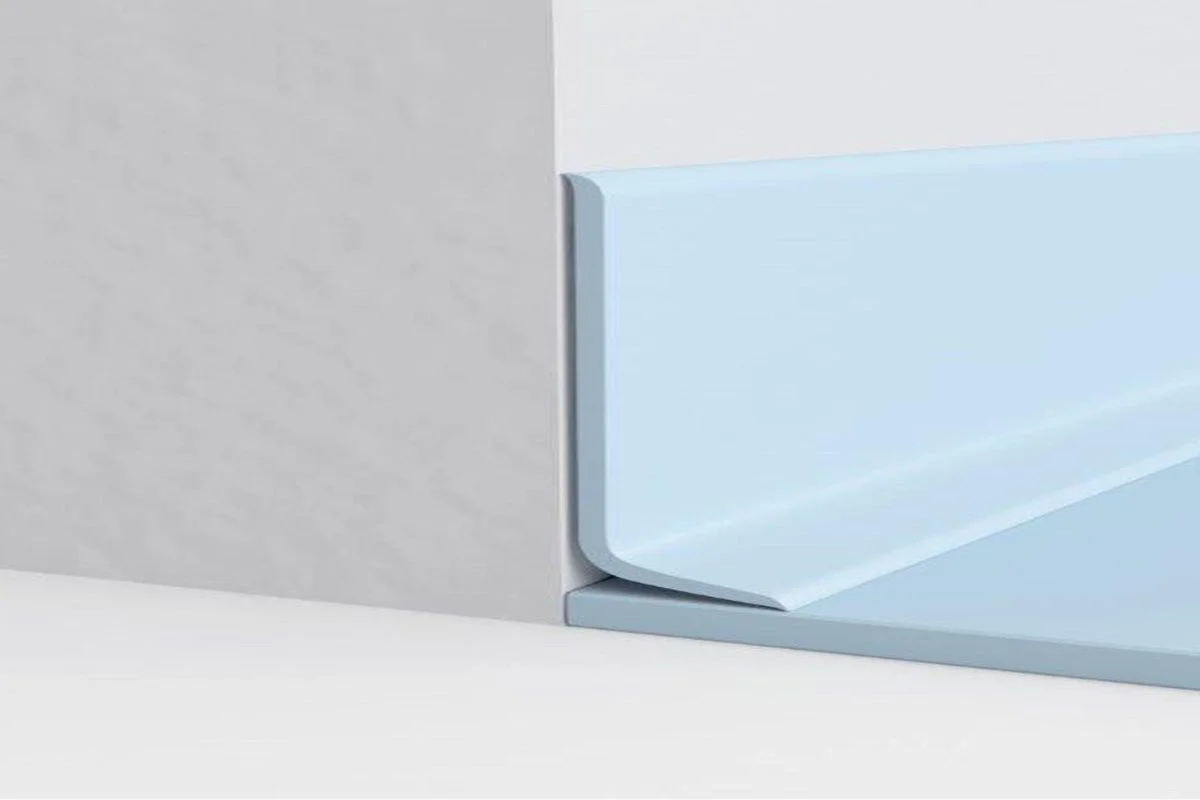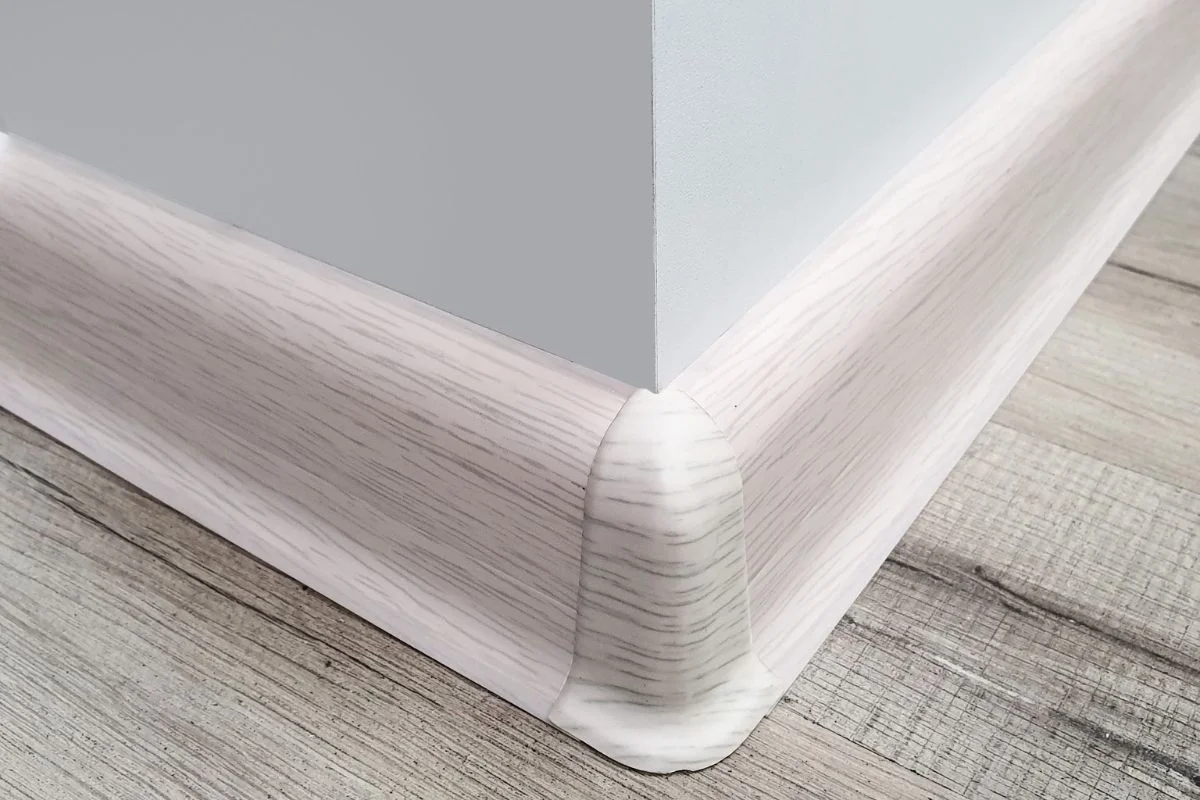
Creative Uses of PVC Skirting in Interior Design
PVC skirting boards, once considered a purely functional element in interior design, have evolved into versatile and creative components that enhance the aesthetic appeal of any space. While traditionally used to cover the joint between the wall and the floor, PVC skirting now offers endless possibilities for adding style, character, and functionality to residential and commercial interiors alike.
In this article, we’ll explore the creative uses of PVC skirting in interior design and how it can transform the look and feel of your living or working environment. From adding visual interest and texture to concealing wiring and cables, PVC skirting has become a go-to solution for designers and homeowners seeking innovative ways to elevate their interior spaces.
Definition and purpose of PVC skirting
PVC skirting, short for Polyvinyl Chloride skirting, is a type of protective trim used along the bottom edge of walls in interior spaces. It serves multiple purposes in both residential and commercial settings, primarily aimed at enhancing the aesthetic appeal of rooms while also providing practical benefits.
The primary purpose of PVC skirting is to cover the joint between the bottom of the wall and the floor, effectively concealing any gaps or imperfections that may exist in this area. It serves as a finishing touch that adds a polished look to the room while also protecting the lower portion of the wall from damage caused by foot traffic, vacuum cleaners, or furniture movement.
PVC skirting also plays a functional role in interior design by acting as a barrier to prevent dust, dirt, and debris from accumulating in the corners where walls meet the floor. By creating a seamless transition between the wall and the floor, PVC skirting helps maintain cleanliness and hygiene in living spaces, making it easier to keep the room tidy and free of allergens.
Furthermore, PVC skirting can serve as a decorative element that enhances the overall aesthetic of a room. It comes in a variety of profiles, colors, and finishes, allowing homeowners and designers to choose options that complement the style and decor of the space. From sleek and modern designs to traditional and ornate styles, PVC skirting offers versatility in design that can help tie together the look of a room and add visual interest to the interior environment.
Overall, PVC skirting serves as a practical and decorative solution for finishing off the bottom edge of walls in interior spaces, providing both aesthetic enhancement and functional benefits to the room.
Advantages and Disadvantages of PVC Skirting
PVC skirting offers a range of advantages and disadvantages that should be considered when evaluating its suitability for various interior design projects. Understanding these pros and cons can help homeowners, designers, and builders make informed decisions about whether PVC skirting is the right choice for their specific needs.
Advantages of PVC Skirting:
- Durability: PVC skirting is known for its durability and resilience. It is resistant to scratches, dents, and moisture, making it suitable for use in high-traffic areas such as hallways, kitchens, and living rooms.
- Easy Maintenance: One of the primary advantages of PVC skirting is its low maintenance requirements. It can be easily wiped clean with a damp cloth or mild cleaning solution, making it ideal for busy households and commercial spaces where cleanliness is a priority.
- Versatility: PVC skirting comes in a variety of profiles, colors, and finishes, allowing for customization to match different interior design styles and preferences. Whether you prefer a sleek and modern look or a more traditional aesthetic, there is a PVC skirting option to suit your needs.
- Affordability: Compared to other types of skirting materials such as wood or metal, PVC skirting is often more affordable, making it a budget-friendly option for homeowners and builders looking to save on installation costs.
- Easy Installation: PVC skirting is relatively easy to install, requiring basic tools and adhesive. It can be cut to size and installed quickly, reducing labor costs and minimizing disruption during the installation process.
Disadvantages of PVC Skirting:
- Limited Aesthetic Appeal: While PVC skirting is available in a variety of designs, some may find that it lacks the aesthetic appeal of natural materials such as wood or stone. In certain settings, PVC skirting may be perceived as less luxurious or upscale.
- Susceptibility to Heat: PVC skirting may warp or deform when exposed to high temperatures or direct sunlight over time. In areas with extreme temperature fluctuations, such as near radiators or large windows, PVC skirting may not be the most suitable option.
- Vulnerability to Impact Damage: Despite its durability, PVC skirting is susceptible to impact damage from heavy objects or furniture. Sharp impacts can cause dents or cracks in the skirting, detracting from its appearance and requiring repair or replacement.
- Environmental Considerations: PVC is a synthetic material that is not biodegradable and may pose environmental concerns during manufacturing and disposal. While PVC skirting is durable and long-lasting, its environmental impact should be taken into account when choosing materials for interior design projects.
- Limited Repair Options: In the event of damage to PVC skirting, repair options may be limited. Unlike natural materials such as wood, which can be sanded and refinished, PVC skirting may need to be replaced entirely if damaged beyond repair.
Creative Uses of PVC Skirting in Interior Design
PVC skirting, while primarily serving a functional purpose of covering the joint between the floor and the wall, can also be creatively used to enhance the aesthetic appeal of interior spaces. Interior designers and homeowners alike have discovered innovative ways to incorporate PVC skirting into their design schemes, adding visual interest and architectural detail to rooms. Here are some creative uses of PVC skirting in interior design:
- Color Contrast: Instead of opting for traditional white PVC skirting, consider choosing a contrasting color that complements or contrasts with the walls and flooring. This can create a bold visual statement and draw attention to the architectural features of the room.
- Texture Play: PVC skirting is available in a variety of textures and finishes, including smooth, wood-grain, and textured surfaces. Experimenting with different textures can add depth and visual interest to the space, creating tactile experiences for occupants.
- Custom Profiles: Custom-designed PVC skirting profiles offer endless possibilities for creating unique and eye-catching architectural details. From intricate molding designs to contemporary geometric shapes, custom profiles can be tailored to suit the style and character of any interior space.
- Integrated Lighting: Incorporating LED strip lighting into PVC skirting can add ambient illumination to rooms while highlighting architectural features and creating a warm and inviting atmosphere. LED lights can be discreetly integrated into the skirting, providing a subtle glow along the base of walls.
- Functional Features: PVC skirting can be designed to serve dual functions, such as concealing wiring or housing built-in speakers for home audio systems. Integrating functional features into the skirting helps streamline the design and maximize the use of space in modern interiors.
- Vertical Accents: Instead of using PVC skirting solely at the base of walls, consider extending it vertically to create decorative accents or wainscoting effects. Vertical skirting panels can add architectural interest and visual depth to plain walls, transforming them into focal points within the room.
- Transitional Spaces: In open-plan layouts or transitional spaces such as entryways and corridors, PVC skirting can help delineate different areas and visually connect the flooring with the walls. Choosing a skirting color or finish that complements the flooring material can create a cohesive and harmonious transition between spaces.
- Contrasting Patterns: Experimenting with contrasting patterns and designs on PVC skirting can add visual drama and personality to interior spaces. From geometric patterns to intricate motifs, incorporating unique designs into the skirting can elevate the overall aesthetic of the room.
- Low Maintenance Landscaping: PVC skirting can be creatively used in landscaping applications to define garden borders, pathways, and outdoor seating areas. Its durability, weather resistance, and low maintenance make it an ideal choice for outdoor use, providing a practical and aesthetically pleasing solution for garden design.
- Artistic Installations: For more adventurous designers, PVC skirting can be transformed into artistic installations and sculptural elements within interior spaces. By cutting, bending, and shaping PVC skirting into abstract forms and geometric shapes, designers can push the boundaries of traditional design and create visually stunning installations that challenge perceptions of space and form.
Types and Varieties of PVC Skirting
When it comes to PVC skirting, there are various types and varieties available to suit different design preferences and functional requirements. Here are some of the most common types and varieties of PVC skirting:
- Standard PVC Skirting: Standard PVC skirting boards are the most common type available in the market. They typically feature a simple design with a straight profile and a smooth surface. Standard PVC skirting is versatile and suitable for a wide range of interior applications.
- Wood-Effect PVC Skirting: Wood-effect PVC skirting boards mimic the appearance of natural wood, offering the aesthetic appeal of wood without the maintenance requirements. These skirting boards come in a variety of wood grain patterns and finishes, allowing homeowners to achieve the look of real wood while benefiting from the durability and ease of PVC.
- Textured PVC Skirting: Textured PVC skirting boards feature embossed or textured surfaces that add depth and visual interest to interior spaces. These skirting boards may have a brushed, stippled, or ribbed texture, creating tactile experiences and enhancing the overall design aesthetic.
- Flexible PVC Skirting: Flexible PVC skirting boards are designed to conform to curved or uneven walls, making them ideal for use in irregularly shaped rooms or areas with architectural features that require flexible molding. These skirting boards can be easily bent or shaped to fit the contours of the wall, providing a seamless and professional finish.
- Waterproof PVC Skirting: Waterproof PVC skirting boards are specifically designed for use in moisture-prone areas such as bathrooms, kitchens, and basements. These skirting boards are resistant to water damage, mold, and mildew, making them ideal for environments where moisture resistance is essential.
- High-Impact PVC Skirting: High-impact PVC skirting boards are reinforced with additional materials or structural features to provide enhanced durability and resistance to impact damage. These skirting boards are suitable for high-traffic areas or commercial environments where durability is a priority.
- Fire-Rated PVC Skirting: Fire-rated PVC skirting boards are manufactured with fire-retardant additives or materials that inhibit the spread of flames in the event of a fire. These skirting boards meet stringent fire safety standards and are suitable for use in commercial buildings, healthcare facilities, and other public spaces where fire safety is paramount.
- Pre-Finished PVC Skirting: Pre-finished PVC skirting boards come with a factory-applied finish or coating that enhances their appearance and durability. These skirting boards require minimal onsite finishing or painting, saving time and labor during installation.
- Wide Profile PVC Skirting: Wide profile PVC skirting boards feature a broader surface area and a more substantial profile compared to standard skirting boards. These skirting boards can create a bold visual statement and add architectural interest to interior spaces.
- Customized PVC Skirting: Customized PVC skirting boards can be tailored to meet specific design requirements and preferences. Homeowners and designers can choose from a variety of colors, profiles, and finishes to create bespoke skirting solutions that complement the overall design scheme of the space
Installation and Maintenance Tips PVC Skirting
Installing PVC skirting is a straightforward process that can enhance the appearance and functionality of your interior spaces. Here are some installation and maintenance tips to ensure a successful and long-lasting outcome:
- Preparation: Before installing PVC skirting, ensure that the walls are clean, dry, and free from any debris or dust. Use a damp cloth to wipe down the walls and remove any dirt or grime that may affect adhesion.
- Measurement and Cutting: Measure the length of each wall where the skirting will be installed and cut the PVC skirting boards to the appropriate length using a fine-toothed saw or PVC cutting tool. Be sure to measure and cut the skirting boards accurately to achieve seamless joints and a professional finish.
- Adhesive Application: Apply a suitable adhesive to the back of the PVC skirting boards, ensuring even coverage along the entire length of the board. Press the skirting firmly against the wall, starting from one end and working your way to the other end. Use a spirit level to ensure that the skirting is straight and level.
- Securing the Skirting: To ensure a secure bond, use panel pins or screws to fix the PVC skirting boards to the wall at regular intervals, particularly in areas with high humidity or temperature fluctuations. Drive the fixings through the skirting and into the wall studs or masonry using a hammer or screwdriver.
- Sealing Joints and Gaps: Once the PVC skirting boards are installed, use a suitable filler or caulk to seal any gaps or joints between the skirting and the wall. Smooth the filler with a putty knife or scraper to create a seamless transition between the skirting and the wall surface.
- Allow for Expansion: PVC skirting boards may expand and contract slightly in response to changes in temperature and humidity. To accommodate this movement, leave a small gap (approximately 2-3mm) between the skirting and the adjacent surfaces, such as walls or flooring.
- Finishing Touches: Once the PVC skirting is installed and the adhesive has fully cured, remove any excess filler or caulk and sand down any rough edges or imperfections. Wipe down the skirting with a damp cloth to remove any dust or debris and allow it to dry completely before painting or finishing.
Maintenance Tips for PVC Skirting:
- Regular Cleaning: To keep PVC skirting looking its best, clean it regularly with a mild detergent solution and a soft cloth or sponge. Avoid using abrasive cleaners or scouring pads, as they may scratch or dull the surface of the skirting.
- Avoid Harsh Chemicals: Refrain from using harsh chemicals, solvents, or abrasive cleaners on PVC skirting, as they can damage the surface and cause discoloration or degradation over time. Stick to gentle cleaning products that are specifically formulated for use on PVC materials.
- Prevent Impact Damage: PVC skirting is durable but may still be susceptible to impact damage from heavy objects or furniture. Use furniture pads or coasters under heavy items to prevent scratches, dents, or gouges on the skirting surface.
- Monitor for Signs of Wear: Periodically inspect the PVC skirting for signs of wear, damage, or deterioration, especially in high-traffic areas or areas prone to moisture. Address any issues promptly to prevent further damage and maintain the integrity of the skirting.
- Protect from Sunlight: Direct sunlight exposure can cause PVC skirting to fade or discolor over time. Consider using blinds, curtains, or window treatments to minimize exposure to UV rays and protect the skirting from sun damage.
- Repair as Needed: If the PVC skirting becomes damaged or dislodged, repair or replace the affected sections as needed. Use PVC adhesive or filler to secure loose skirting and restore its appearance and functionality.
Conclusion
PVC skirting offers a versatile and practical solution for adding the finishing touches to interior spaces while also providing protection for walls and concealing unsightly cables or wires. With its durability, ease of installation, and low maintenance requirements, PVC skirting has become a popular choice among homeowners and designers alike.




0 comments